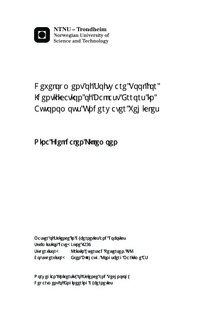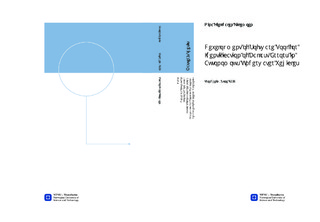| dc.contributor.advisor | Pettersen, Kristin Ytterstad | nb_NO |
| dc.contributor.advisor | Børhaug, Even | nb_NO |
| dc.contributor.author | Lillemoen, Nina Fjelldalen | nb_NO |
| dc.date.accessioned | 2014-12-19T14:09:47Z | |
| dc.date.available | 2014-12-19T14:09:47Z | |
| dc.date.created | 2014-08-29 | nb_NO |
| dc.date.issued | 2014 | nb_NO |
| dc.identifier | 742047 | nb_NO |
| dc.identifier | ntnudaim:10678 | nb_NO |
| dc.identifier.uri | http://hdl.handle.net/11250/261282 | |
| dc.description.abstract | An autonomous underwater vehicle (AUV) with correct ballast will be energy efficient and will easily follow its programmed mission path. A ballast error may result in increased power consumption. It can also prevent an AUV from following its mission path and in severe cases a ballast error can cause an AUV to crash. The correct ballasting is achieved by carefully adjusting the ballast of the AUV so that it gains a stable state of equilibrium with neutral buoyancy. The state of equilibrium and buoyancy are affected by changes in the AUV's weight due to its payloads and variations in the water salinity. The ballasting, therefore, has to be checked and possibly re-done between missions to correct any ballast errors. Kongsberg Maritime has an AUV called HUGIN 1000. Today, the ballasting process of HUGIN 1000 is done manually, which is time-consuming and requires experience. For this reason, Kongsberg Maritime commissioned this Master Thesis, with the objective of developing a software tool that will automate the ballasting process by identifying ballast errors and determine suitable ballast adjustments.The software tool will form a static ballast system for AUVs, which will identify necessary adjustments in ballast based on different vehicle measurements and mission data. The system includes three modes of operation that have been developed to perform different tasks and handle the varying access to mission data. These modes include a first, pre and post mission mode. The first mission mode is used before the very first mission when no mission data is available. It will calculate a suitable ballast adjustment based on manual measurements. The pre mission mode will calculate an improved ballast adjustment based on collected mission data, which has been collected by the AUV during a mission. It is the task of the post mission mode to process the data and then identify any ballast errors based on the data.The result of the Master Thesis is a software tool that has been designed and implemented including the results of tests performed on it. Based on the results and a literature survey, possible improvements are suggested and discussed. These improvements include additions and extensions to the implemented system and a new active ballasting system. Finally, the conclusion is that a system for identification and adjustments of ballast errors in AUVs, which has been developed and implemented, can be justified by the AUVs' requirement for correct ballast. Moreover, it would be beneficial as it will make the process of ballasting quicker and easier. | nb_NO |
| dc.language | eng | nb_NO |
| dc.publisher | Institutt for teknisk kybernetikk | nb_NO |
| dc.title | Development of Software Tool for Identification of Ballast Errors in Autonomous Underwater Vehicles | nb_NO |
| dc.type | Master thesis | nb_NO |
| dc.source.pagenumber | 166 | nb_NO |
| dc.contributor.department | Norges teknisk-naturvitenskapelige universitet, Fakultet for informasjonsteknologi, matematikk og elektroteknikk, Institutt for teknisk kybernetikk | nb_NO |

